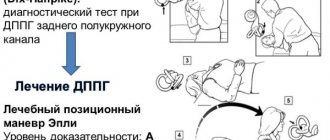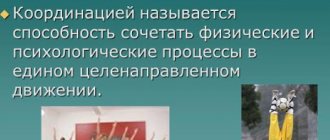- home
- Correction
Logoneurosis, or stuttering during speech, is a pathological condition in which a child or adult repeats or prolongs sounds, syllables and words.
Articulation in logoneurosis is accompanied by convulsions of the organs of the speech apparatus or long stops when moving from one sound to another. Symptoms of stuttering appear at an early age if their basis lies in a genetic predisposition to pathology, in congenital diseases of the central nervous system; at any period of life, if the cause of the disease is stress, fear, psychological trauma.
Stuttering is divided into neurotic and neurosis-like. The first are treated therapeutically: breathing exercises, hypnosis, psychological and speech therapy assistance to the child. Special attention should be paid to the atmosphere in the family, relaxation, sports, and singing. The second, neurosis-like, require the use of antispasmodics, tranquilizers, several courses of dehydration, massage and physiotherapy.
Breathing exercises are useful for the treatment of any type of stuttering, as well as its prevention at an early age in children. If you perform the exercises in strict sequence, according to instructions and regularly, then in 70% of cases the prognosis for the recovery of preschool and school-age children is favorable.
The essence of breathing exercises
Breathing exercises for stuttering for children are a set of special exercises for relaxing and toning the muscles of the speech apparatus. With the help of simple tasks, the child will learn to breathe correctly, establish the rhythm and pace of inhalations and exhalations.
Speech therapists and parents can use several types of breathing exercises for stuttering:
- Traditional method. It includes a series of exercises to train the abs, diaphragm, and form conscious regulation of free breathing during a conversation.
- Breathing technique according to A. N. Strelnikova. Suitable for the treatment of speech rhythm disorders and the human respiratory system. The method is based on the activation of the whole organism, promotes health, gets rid of speech disorders, asthma, adenoids.
It is not necessary to choose between stuttering correction methods; you can use several methods at once.
Gymnastics for logoneuroses can solve the following problems:
- Form relaxed breathing while speaking
- Eliminate fear of articulation
- Relieve muscle spasm of the vocal apparatus
- Improve brain function due to the flow of large amounts of oxygen
- Teach your child articulation control
- Strengthen the muscles of the abdominal cavity, diaphragm, nasopharynx
- Restore the body's biorhythms
Important! There is no need to count on quick results from using breathing exercises for stuttering. It will take at least 3-6 months to solve speech problems if you practice regularly.
Non-drug treatment for stuttering
The first thing a doctor who wants to cure a patient with a stutter must do is convince him that he must speak. You need to talk as much as possible, without being embarrassed by the speech impediment (this will only make things worse). Stuttering is not one of those diseases that needs to be hidden from society - there is nothing wrong with that.
You need to understand one simple pattern: the more you speak, the better your speech becomes. Stopping the conversation, on the contrary, aggravates the disorder. A good option is to find a job that involves communication. Yes, it will be very difficult at first, but the result (believe me!) is worth it. Remember that stuttering is a behavioral disorder that you can correct even on your own. Don't be afraid to speak up!
You may be offered behavioral psychotherapy or hypnosis treatment for stuttering. If you can't cope on your own, this should help you. However, it is worth saying that the effectiveness of psychotherapy for stuttering is very doubtful: the results of such treatment are not comparable with the results of “self-therapy.”
For the most part, your chances of quickly getting rid of your stuttering are up to you. The doctor will tell you what to do, having become closely acquainted with your problem (methods and approaches are individual for each person), and will monitor your progress, but the most important part of the treatment still falls on you.
General recommendations
The effectiveness of breathing exercises for children against stuttering largely depends on the quality of task completion. The child and the adult must enjoy the training, otherwise months of training will not give a positive result. An equally important role is played by the psychological atmosphere during the lesson, good relations between the patient and the teacher, and comfortable conditions for conducting the lesson.
When performing breathing exercises for stuttering with children, follow these recommendations:
- Ventilate the room before starting the lesson. Monitor the humidity and temperature in the training room, they should be comfortable: 18-20 ° C, 40-50%.
- Feed your baby 1-2 hours before training. Children should not exercise hungry or immediately after lunch.
- Eat food 1 hour after the end of class. The abdominal muscles should calm down and return to normal after physical activity.
- The lesson should last no more than 20 minutes, plan classes for the afternoon and morning. To achieve maximum results, you need to work with your child 2 times every day.
- If your baby is choking or loses his breathing rhythm, stop the workout. Children may become unconscious due to too many deep breaths. Monitor your child's condition throughout the lesson.
Important! If a child’s stuttering is combined with pathologies of the respiratory system, consult a doctor before starting training using any system. For such a child, the workload and schedule of classes should be regulated by the attending physician.
Breathing exercises
Breathing exercises are performed sitting and standing. It is important to stand in front of a large mirror to control the position of the body, the straightness of the back and the work of the facial muscles. Each task is repeated three to five times. The teacher or parent works together with the child, showing the example.
Long exhalation
Recommended for children to relieve spasm and tone from the larynx:
- the child sits on a chair in front of the mirror;
- keeps your back straight and your shoulders at the same level;
- inhales air into the stomach through the nose, tries to feel how the abdominal cavity is filled with oxygen;
- makes a long exhalation through the mouth, lips can be curled into a tube, counts to 5-10. It is very important not to arch your back or move your head along with your breathing.
Air shocks
The exercise helps the preschooler learn to control the rhythm of breathing and the force of exhalation:
- take a deep breath into your stomach through your nose;
- exhale in sharp and short bursts through your mouth;
- monitor the tension of the abdominal muscles;
- While exhaling, count the number of pushes; you should try to increase this indicator from session to session.
Yawn with sound
When completing the task, the clamp is removed from the muscles of the neck and larynx:
- sit up straight;
- inhale deeply through your nose;
- exhale for a long time with your mouth open, as if you are yawning;
- voice your exhalation: “A-ah-ah...”;
- As you exhale, your head should be slowly lowered to your chest.
Smile “Ee-e-e”
This exercise helps you learn how to exhale long. This is useful for pronouncing sentences and complex words without stopping:
- head straight, inhale slowly and deeply into the stomach;
- stretch your lips into a smile;
- begin to exhale slowly through your mouth and at the same time say: “E-I-I...”;
- exhalation lasts as long as possible.
On a note! To make it interesting for your child to do breathing exercises, organize competitions: who can sustain the sound longer, who doesn’t raise their shoulders during class, and so on.
Snowstorm
The exercise teaches the child to regulate the length of sound pronunciation, strength and timbre of the voice:
- inhale air into your stomach;
- fold your lips into a tube;
- pronounce the sound “U” loudly and roughly at first. Then gradually reduce the volume and strength of articulation, as if moving in a circle.
O-A-U-I
The task combines sound pronunciation and hand movements according to the following scheme:
- the letters are pronounced in a certain sequence O, A, U, I. Pauses between articulations are not allowed, you need to sing the complex in one breath;
- simultaneously with sound pronunciation, you need to make movements with your hands for each letter;
- “O” we draw a big belly with our hands, “A” we raise our hands up and stroke our cheeks with our palms, “U” we stretch our arms forward, “I” we return our hands to the position in front of us and stretch them to the sides, we draw a smile under the chest. This exercise helps to remove the clamp in the larynx and lengthen the articulatory exhalation.
Watch this set of breathing exercises in video format:
Game exercises
Games for stuttering can be divided into two types: relaxing and rhythmic. The first ones relieve spasms of the facial muscles; they should be carried out in the evening, at night. The latter work as a simulator for practicing breathing rhythm and developing speech speed. Offer active games to your child in the first half of the day.
Football
An exciting game for normalizing the pronunciation of sounds when stuttering. You will need a large piece of cotton wool and several toys to organize a team. The child puts the cotton wool in front of him, takes air into his lungs with his nose and blows on it with his mouth, tries to score a goal with an improvised ball into the goal of his plush opponents. Place bears and hares 40-50 cm away from the child on the table. Be sure to say in which direction the fleece should roll so that the air stream is directed towards the target.
Don’t forget to praise your child for correctly completed tasks, and encourage the spirit of competition and excitement.
Chick
The child improvises birdsong using any vowels. It is important to inhale the air through your nose and hold out the sound for as long as possible. Offer to sing not only evenly, drawn-out, but also to make sonorous modulations: a-a-a-o-o-o-o-u-u-u, i-i-i-e-e-e-e-e and others.
Do the math
The child puts his hand on his tummy and takes a deep breath through his nose. Bends the fingers on his free hand, counts the fingers on one exhalation. Gradually make the tasks more difficult by increasing the final number. A child under 6 years of age can count up to 5 on one exhalation, and after 6 years - up to 10, bending the fingers on both hands.
Cat
This game helps the child control the fluency of speech. The kid stands up and crosses his arms over his chest. Bends to the sides, exhales, rises to the starting position and pronounces the vowels: a-a-a, u-u-u, i-i-i, e-e-e. It is important to stretch them for a long time, do not inhale them again, you can sing them.
Jug
The game is necessary for the formation of vocal delivery and speech breathing. The child raises his hands up, as if about to dive into the water, inhales very deeply through his nose. He lowers his arms like a swimmer, bends over completely and sings long sounds (vowels). For the next inhalation, you need to get back to the starting position.
Candle
The game creates smooth syllabic pronunciation. The child pronounces the syllable: Ma-a-a, Pa-a-a, Ru-u-u, Zi-i-i, at the choice of the teacher. He folds his hands, palms facing each other. Inhales air through his nose. At the moment of articulation, he makes zigzag movements with his hands, lowering them down, depicting a candle flame. At the same time, one of the syllables is sung smoothly.
Car
The child sits on a chair and the teacher sits behind him. They represent a car. First they turn the steering wheel and hum like a motor: w-w-w. The sound is pronounced without stopping, in one breath. Then the car stops, the child takes a deep breath and shrugs. This helps relieve muscle tension.
Pump
Can be included in the game by linking it with the previous exercise. Tell your child that the car has a flat tire and needs to be pumped up to continue the journey. The child stands up and raises his arms to his chest. Inhales deeply, lowers the pump to the floor, at this time stretches out vowels as instructed by the teacher or parent.
Watch this set of exercises in video format:
Note: according to Dr. Komarovsky, there is no need to choose between medication and relaxation (massages, breathing exercises) treatment of stuttering in children; it is necessary to combine both methods of correction.
VOICE PRODUCTION USING A.N. STRELNIKOVA’S METHOD
Singing is one of the ways of human communication and self-expression, accessible to almost everyone. Therefore, this action is natural and simple. Someone who is a natural singer wants to sing, just like someone who is a natural runner wants to run. The singer’s body establishes connections necessary specifically for singing - easier than any others, and requires their use, because in living nature, what is not used dies. Singing satisfies not only the aesthetic and emotional, but also the physical need of a person, which the singer needs to know and remember. This is the work of a complex of muscles associated with the breathing process, and unconsciously organized by a creative emotional mood. Complex work is impossible without a coordinating center, and since it is organized by emotion, a professional must be able to create it and maintain it while singing. In people who sing with voices that we call “naturally set,” sound connections are established unconsciously, but at the same time correctly and easily, breathing is organized correctly. In such cases, the only thing the teacher must do is to help the singer realize what is happening in his beautiful instrument while singing, so that he can preserve his voice and restore natural connections if accidents disrupt them. But, singing schools in most cases propose to perceive singing not as a way of expressing thoughts and feelings, but as a means for mentally directing the sound on each note. By worrying about the note, the singer loses his natural sense of the cantilena and a meaningful phrase and thinks not about who, why and why he is singing, but about whether the given note hit where he intended it. Passion for singing causes an unconscious desire for synthesis, that is, for the unification of the muscles involved in it, for the organization of a coordinating center. Analyzing your feelings while singing weakens and disrupts the connections of sound science. Sometimes the singer’s attention is focused on one muscle group: “Mask on!” In the mask!”, “On the teeth!”, “Into the dome!”. This is what disrupts the natural connections of sound science, and with them the feeling of a joyfully singing body that a person naturally has, just as a nightingale or a lark has it, is lost. The need for deep internal connections is in most cases realized by singers. They are created and preserved by the singing emotional mood, as long as it is not interfered with or not interfered with too actively. With rude interference, the connection is broken in some link, and the voice stops sounding. The loss of the voice is a violation of the connections of sound science, and its return is the restoration of these connections. What needs to be done to maintain and develop connections in sound science? The voice plays a melody. And melody is movement. Only that which is itself movable can produce movement. The ball flew, a hand threw it, the branch swayed, it was pushed by the wind. The respiratory organs, their muscles and the muscles associated with them are mobile. This is what can speak, shout and sing in a person! A singer's instrument is part of his body. And, moreover, one of the most important and least controllable is his respiratory organs. We do not see the movements that occur inside them, and these movements depend on the emotional state. Therefore, learning to sing means learning to control breathing and the singing emotional state. But, not only breathing is subordinated to emotions, but emotions can also be subordinated to breathing! Actors and singers have a professional term for "prop." A “propped” voice is a ringing voice. What is a “supported” breath? Touching your partner's shoulder does not mean leaning on him. To lean is to transfer part of the weight of your body onto someone else’s shoulder, to feel that the muscles of the shoulder have begun to resist the pressure of your hand. Therefore, a “supported” inhalation is an inhalation of extreme depth. The air taken during such an inhalation cannot go further. He “leaned”, that is, he simply rested against the walls of the respiratory organs. The muscles surrounding them begin to resist the pressure of the air, and you feel it. The sensation is similar to what you experience when leaning on someone else's shoulder: elastic, physically pleasant muscle resistance. And if the breath is taken correctly, you will immediately want to sing! Inhalation is the movement of air into the body. To consciously take a breath means to mentally establish a connection with the bottom of the lungs. The direction of the larynx is diagonal in relation to the lungs, therefore, it is more convenient to sing if you have taken a conscious or unconscious breath, “supported” in the back. The lungs expand to their bases not in the chest, but in the back. Consequently, this inhalation is easy to hold, although its volume is large. The sound is an exhalation that vibrates the vocal cords. In order to maintain a feeling of “support” while playing, you need to learn to hold a correctly taken breath. And one more thing: you don’t need to think about the path along which you will take your breath. Think about the place where he instantly comes, because if you think about the road, tension arises there. Lead your inhalation with movement and emotional attitude. Use the tilt as you inhale. Hold your breath and sing without directing the sound anywhere. There is an opinion that “blocking” breathing is harmful, almost dangerous. Yes, holding an inhale that distorts the shape of the lungs, and even just doing it, is harmful! An inhalation that fills the lungs without distorting their shape can restore both voice and health! The best voice production in the world is not Russian, not French, not German or even Italian... The best voice production in the world is NATURAL! If you consciously take the right breath and hold it, your singing intuition will do the rest. Remember the drill song in the army, the choir song at the table and the labor song, for example our “Dubinushka”. In all cases, the song lifts the mood, frees us from habitual restraint and unites people in a way that mere words without melody cannot unite. Wanting to express thoughts and feelings, people first of all look for words and sing them to music. For a person who sings naturally, SINGING IS LONG SPEECH OF HIGH EMOTIONALITY! And in professional singing, in pop, romance, operetta and even opera music, vocalization is an exception, most often on the upper notes, where pronouncing words is difficult. And there is no natural boundary between conversation and recitative, and recitative is the introduction to an aria. Consequently, it makes no sense for a professional singer to imagine singing as a vocalise with words, and even with voice production. After all, then it is an abstruse and complex action. And the words in this case only get in the way of singing. What is it like to listen to a singer whose words prevent him from singing? If for you singing is drawn-out speech, then this action is emotional and simple, and the words help to sing and organize the cantilena. You just need to be able to pronounce these words, because, as you know, “what is well spoken is half sung.” Music has three dimensions - pitch, timbre and force . The singer must simply help the vocal cords close so that the pitch of each note is accurate, and free the timbre from extraneous sounds. As for strength, you can’t think about it; forcing it won’t create it. You need to think about sonority—a sonorous voice flies well into the audience. As for the range, it is obvious that the abdominal muscles and diaphragm should actively work on the upper notes, and the pectoral muscles on the lower notes.
“LOSS” OF VOICE AND ITS RESTORATION All singers, Alexandra Nikolaevna and myself, patients who complained of a short range, weakness of sound, rapid fatigue from singing and talking, dryness and pain in the throat, singing or fibromatous nodules, had small clavicular or thoracic overextended and strained breathing. This was the main cause of the disease. The sound is an exhalation that vibrates the vocal cords. If there is too much air in the narrow tops of the lungs, it is cramped. And it tends to escape during the sound in such a wide stream that it prevents the vocal cords from closing. It puts pressure on the larynx from below so that it tends to push the larynx with closed vocal cords upward. A singer, actor, or even just a person who needs to speak or sing cannot remain silent. He continues speaking or singing on vocal cords that are not closed or are difficult to close and, of course, finishes his work sick. Goes to the doctor. And then in a circle: bulletins, medicines, advice to take care of your voice. And fear comes to the aid of the disease. The person begins to think intensely about the larynx and vocal cords, and they tense in response to his thoughts. A nodule begins to grow from incorrect sound guidance. Bulletins are increasingly frequent and lasting longer, and, if silence and medications do not help, surgical removal of the nodule is required. But no matter how wonderful the surgeon is, the improvement in well-being and sound is short-lived, because breathing and sound management remain incorrect. The nodule may reoccur. Again, prompt removal and, in most cases, an offer to change profession. Therefore, it is necessary not to protect the voice, but to organize breathing and sound management differently . The first thing I recommend to both actors and singers is to remove excess air from the upper lobes of the lungs and force them to practice the inhalation that is most convenient for holding. This creates an air reserve at the bases of the lungs and prevents excess air from entering the larynx. Singing and speaking immediately becomes easier. Then I give special sound exercises using the same movements that the singers used to inhale. The diaphragm and abdominal press actively work during the sound, and the pain or nodule begins to disappear. And when you have trained them to work in support of sound, they will work out of habit. A habit requires reinforcement. Breathing exercises must be repeated. Therefore, breathing exercises by A.N. Strelnikova MUST be done before each concert or opera performance. And here's another thing. If while singing you have an unpleasant sensation in some part of your body, know that there is a mistake there. Find a movement that will remove this feeling. We are told that singing well is difficult and difficult, and singing poorly is easy and simple. But in life, everything is the other way around: a bad singer sings difficult and difficult, while a good singer sings easily and naturally. Now you know why!
RECOMMENDATIONS FOR SINGERS AND DRAMATIC ACTORS Never think about breathing, either in singing or in speech. Think about the meaning of what you are saying or singing about. Spectators sitting in the front row of the stalls should not see how the singer uses his breath on stage. In order for the head register to sound good, so that the upper notes are ringing, it is necessary to create a so-called diaphragmatic “support” , i.e. very strong tension in the lower abdomen. Strelnikovsky breathing exercises will help develop the singing apparatus and create the so-called “column of sound”, which world-famous opera singers have from God.
RECOMMENDATIONS. Working with vocalists requires special, “filigree” skill, because the voice of each singer can ultimately become national pride. Mistakes are not allowed here. You should consider: 1. the type of voice of the singer (bass, baritone or tenor, coloratura soprano or contralto...); 2. his physical characteristics; 3. type of nervous system; 4. the condition of his spine (especially the cervicothoracic region); 5. general hormonal background of the body (it is well known that sex hormones affect the tone of the vocal folds)
REMEMBER! The voice should not only be clear and beautiful, but also durable!
Breathing exercises by Strelnikova
Strelnikova’s gymnastics have been used to treat stuttering in children and adults in Russia since 1976, when the first collection of useful tips from the author of the method was published.
The technique is based on rhythmic breathing through the resistance of the diaphragm muscles. It is very important to pay attention to the inhalation. It should be noisy, sharp, rhythmic. Inhalations are taken countingly, sharply, while the chest must be compressed, creating obstacles for the passage of air. Exhalation occurs effortlessly, naturally.
Benefit
Initially, breathing exercises by A. N. Strelnikova were invented for singers who had lost their voice. But having seen the good results of the method, many exercises began to be used in speech therapy work to correct speech development delays and logoneuroses.
Strelnikova’s breathing exercises for stuttering in children are beneficial for the following reasons:
- The child does not concentrate on exhalation. He does not need to think about the length of the articulatory phrase, the need to draw air to continue the conversation.
- Automation of this breathing method blocks muscle spasms during speech, they are relaxed and do not wait for cramps.
- Children who stutter are constantly stressed by the need to communicate verbally with others. As a result, the state of the nervous system and general somatic health deteriorate. Strelnikova’s gymnastics improves immunity, sleep, appetite and mood.
- If logoneurosis is associated with brain injuries and diseases of the central nervous system, then the organs need oxygen supply. The author's method improves the supply of nutrients to cells and blood flow.
For classes with young children using the Strelnikova method, it is useful to use videos so that children copy body movements according to the example and do not lose count.
Causes of stuttering in children
At risk are children whose parents have diseases of the nervous system, infectious or somatic nature. Children who suffer from nightmares, enuresis, as well as those who are anxious, irritable, vulnerable, or with a weak nervous system stutter more often. Bilingual children may also stutter.
The following factors can provoke stuttering in children:
- Features of intrauterine development. Difficult pregnancy, fetal asphyxia, injuries during childbirth;
- The baby's health status. Injuries, metabolic and trophic disorders, infectious diseases in a newborn;
- Physiological factors. Traumatic brain injury, concussion, organic brain disorders, intoxication, as well as diseases that weaken the central apparatus of speech (typhoid, measles, whooping cough, rickets, helminths, diseases of the throat and nose);
- Psychosocial factors. Fright, horror, fear in the baby, dysfunctional situation in the family (conflicts, stress), improper upbringing (pampering, punishment, unbalanced upbringing or upbringing of the “correct” child), the predominance of negative emotions and tension, severe mental trauma, affect;
- Features of speech formation. Parents did not pay attention to the fact that the baby spoke quickly or while inhaling, pronouncing sounds incorrectly. Excessive speech development activities with a child can also cause stuttering. For example, if parents overloaded the child with learning or used materials intended for older children;
- Another factor that provokes stuttering is the fast, nervous speech of the child’s closest relatives. He can imitate them, just like his stuttering relatives. If your baby has a dominant left hand, you should not retrain him, as this can also provoke a violation.
A strict, demanding and inconsistent attitude towards a child from parents, educators and other adults can also become a trigger for the development of stuttering.










